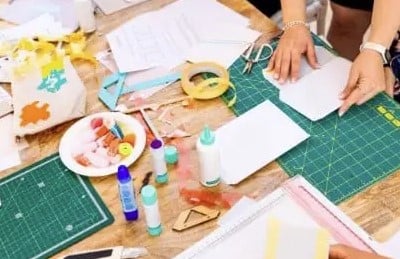We all use soap. In the old days, most people made their own. Today, we are much more likely to buy it from the store. There are lots of brands to choose from, and each brand has various formulations and scents.
But making your own soap has some definite advantages. One of the most significant is the price. We can make soap much cheaper than we can buy it. Making it ourselves also gives us complete control over the ingredients, so we can create a soap that’s perfect for our skin type in a scent of our choice.

Making soap is much easier than you might think. It is, however, important to take certain safety precautions. Here’s a basic recipe:
Ingredients
* 12 cups lye crystals
* 5 cups softened water
* 6 pounds lard
Instructions
1. Put water in a glass or plastic bowl. Carefully pour lye into water, stirring constantly with a plastic or wooden spoon. This should be done outdoors or in a well-ventilated area because it produces caustic fumes.
2. Mixing lye and water produces heat. When the lye is completely dissolved, set the mixture aside to cool.
3. Place lard in a stainless steel or enamel pan. Melt over low heat.
4. Allow both the lye solution and the lard to cool to room temperature.
5. Slowly pour the lye solution into the lard, stirring slowly and constantly with the plastic or wooden spoon.
6. Continue stirring after all of the lye solutions has been added. Drizzle a small amount of the mixture into the pot periodically. When the soap keeps its shape for a moment before sinking into the mixture, you can add scent, color, and herbs.
7. Pour the soap into a mold greased with Crisco. Wrap in a towel, and let sit for about 18 hours or until completely cooled. Uncover and let sit for 12 more hours.
8. The soap may now be unmolded and cut into bars. Let the bars cure for 3 to 4 weeks before using.
Customizing Your Soap
There are lots of different ways you can customize your soap. To make the best soap for your skin type, you may want to use different oils. Some that are commonly used include olive oil, coconut oil, cocoa butter, and shea butter. The correct amount varies depending on which oil you use, so look for recipes online or in books until you get the hang of it.
Essential oils have therapeutic properties and add fragrance. Oatmeal, cornmeal and other grains can be added as exfoliants. And skin-safe colorants may be used to produce the desired color. These ingredients should be mixed together and added to a cup of the soap mixture, then stirred into the rest of the soap mixture immediately before pouring into the mold.
Making your own soap is easy, and it can be lots of fun. Coming up with the perfect concoction for your skin is rewarding, and sweetly scented homemade soaps make wonderful gifts for any occasion.
Please leave your questions and comments below.






